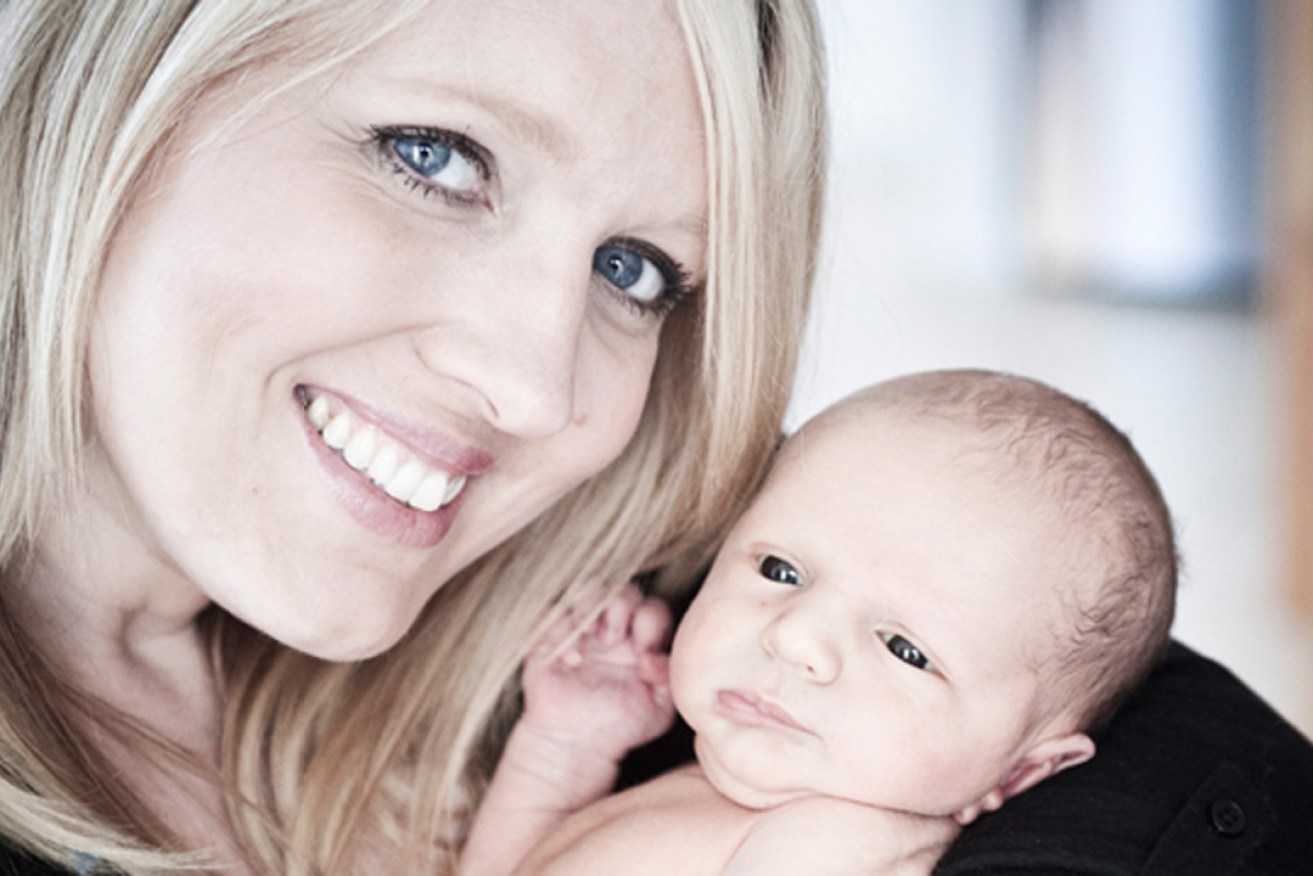New research sheds light on SIDS
A developmental abnormality may be the reason why some babies sleeping on their front are more at risk of sudden infant death syndrome, according to research released today by the University of Adelaide.

Alex Hamilton with son River, who died of SIDS at four months. Photo: supplied
The researchers discovered what they describe as a “significant abnormality” in parts of the brainstem that control breathing and movements of the head and neck.
Dr Fiona Bright, a research fellow at the Adelaide Medical School, University of Adelaide – who conducted the study with university Professor Roger Byard, in collaboration with the Harvard Medical School and Boston Children’s Hospital – said one of the reasons SIDS was so devastating for families was that it often occurred with no warning.
“While the exact cause of death in SIDS has not been identified, multiple studies have pointed to a subset of SIDS babies that are not entirely ‘normal’ before death,” she said.
“These infants all seem to have some form of underlying vulnerability, exposing them to increased risk.
“Our studies have now discovered a significant abnormality within key regions of the brainstem in SIDS babies, specifically in parts of the brainstem that control breathing and movements of the head and neck.
“This abnormality is directly linked to SIDS cases.”
The abnormality is in the transmission in the brain of a neuro-peptide, known as “substance P”, and its binding with an associated neuroreceptor, “neurokinin-1” (NK1R), both of which play a critical role in the brain’s control of the respiratory system, the cardiovascular system, and in how the body responds to hypoxia.
Professor Byard, Professor of Pathology at the University of Adelaide, told AAP the research team tested brain samples from babies who died of SIDS and found that in the vast majority of cases they had much lower levels of substance P in areas that are related to the movement of the head and neck.
“For 25 years we’ve been saying, why do SIDS babies not get out of a dangerous situation when they are face down? Why don’t they just lift their heads up and cry and thrash around to get their parents’ attention? Well, they just don’t move as well as normal babies do.”
He said the study found boys, who account for twice as many SIDS deaths as girls, were more likely to have lower levels of substance P.
“We really have opened a doorway into a whole new area of SIDS research. What we need to do now is work out why the levels are low and is there some way of testing these kids?”
Prof Byard also said a landmark US study, later replicated by his team using Australian samples, had revealed reduced levels of serotonin in the brain stems of SIDS babies.
“Essentially all these chemicals work together, serotonin and substance P, and certain levels are required to stimulate a response,” he said.
Ultimately, it is hoped that future research could lead to the development of screening techniques or biomarkers to identify infants who may be at risk of SIDS.
The results of the study, which investigated 55 SIDS cases in the United States, are now published in the journal PLOS ONE.
The research was funded under a Fellowship established by the River’s Gift SIDS charity, set up two parents who lost their four-month-old son River to SIDS in 2011.
River’s father, Karl Waddell, the general manger of River’s Gift, said he was excited by the latest research findings: “We hope this research will eventually assist in the quest to stamp out SIDS.”
-with AAP




